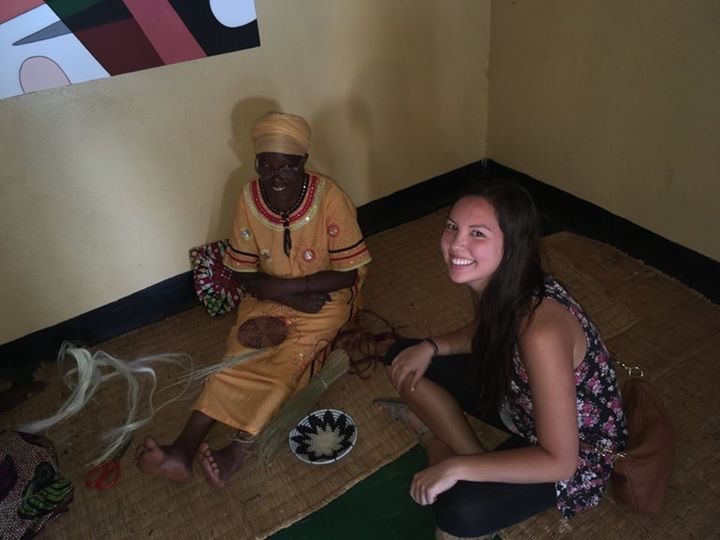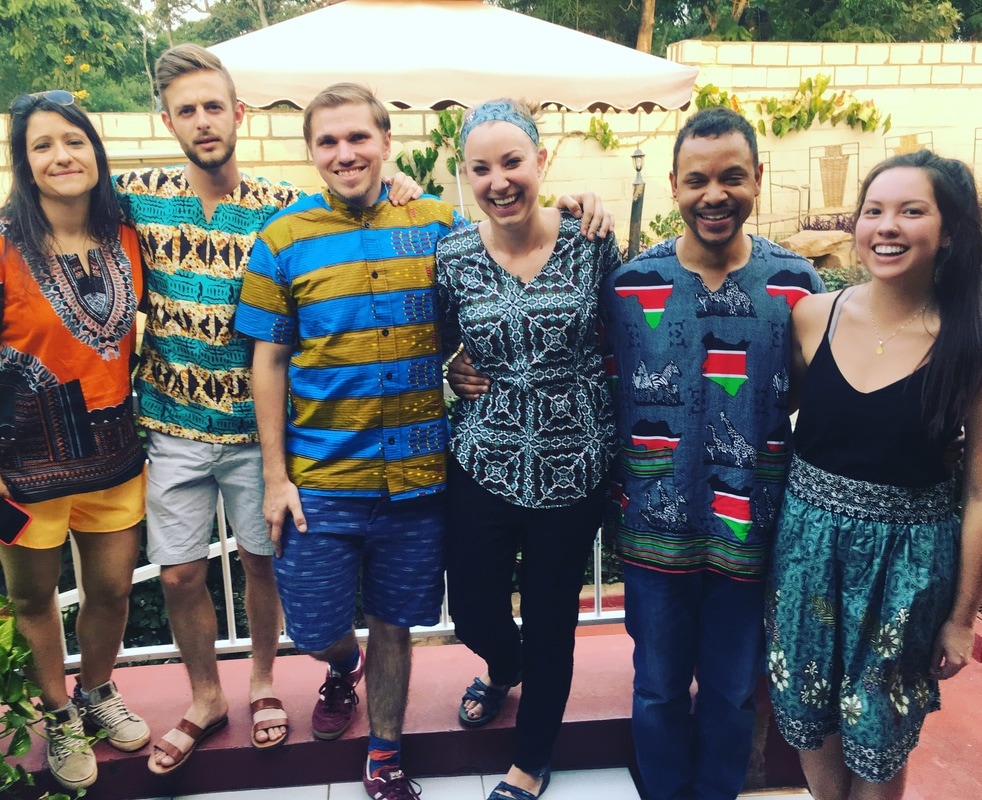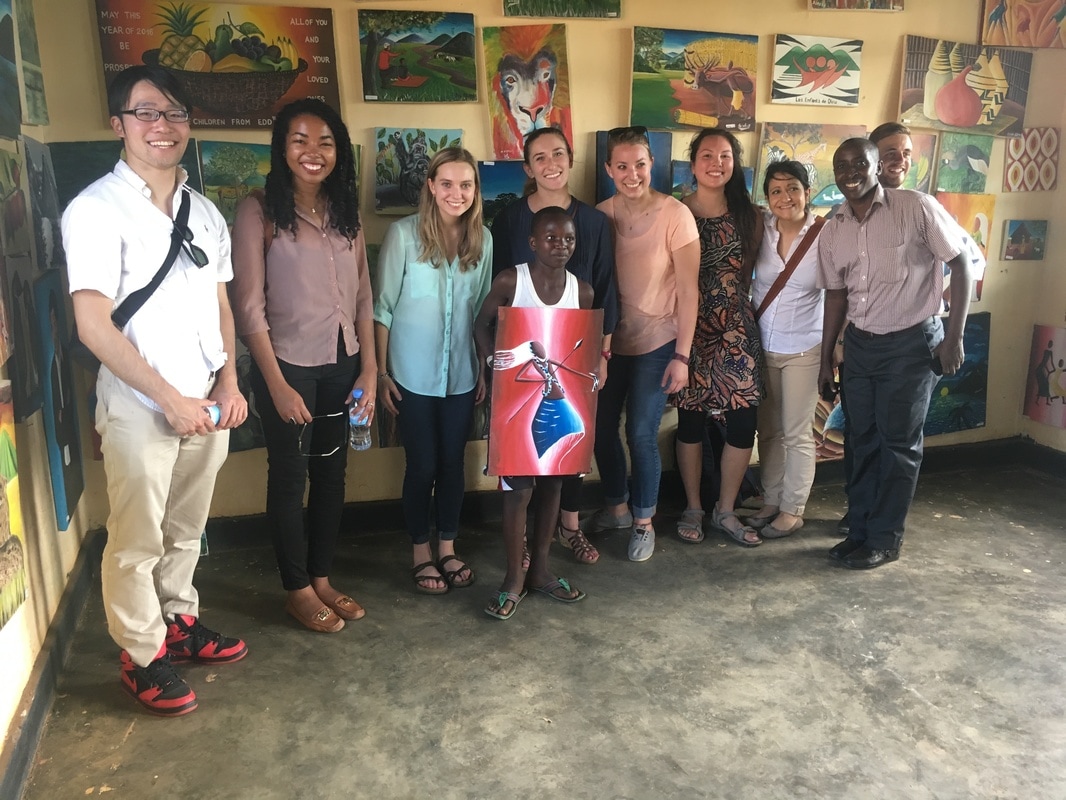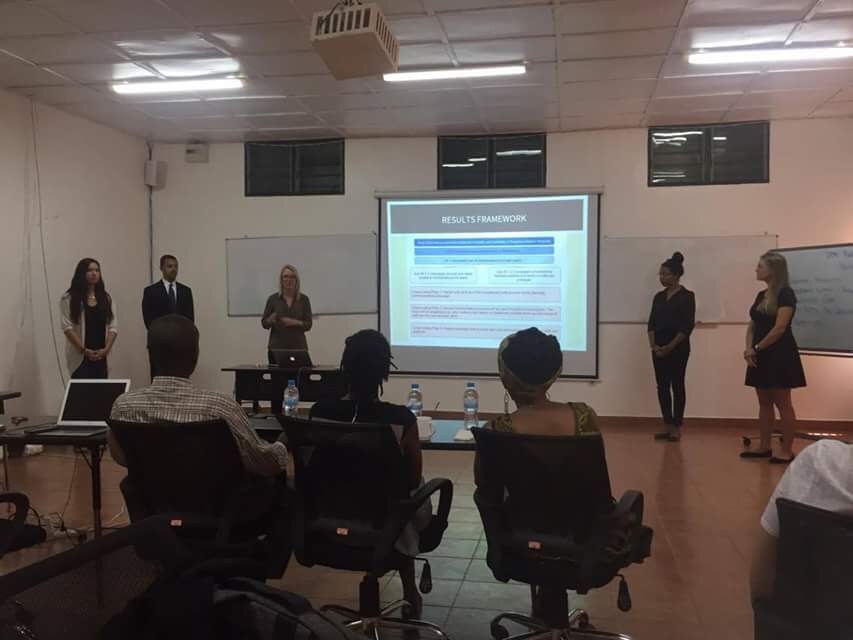
DPMI Rwanda with Partners in Health
Hi! My name is Megan Garland. I’m a 23-year-old emerging international development and policy professional. I’m currently a graduate student at the Middlebury Institute of International Studies studying for my Masters in Public Administration and Peace Corps Masters International joint degree. My undergraduate degrees are Chinese and International Studies focused on diplomacy in East Asia including Chinese Language Flagship certification. I love traveling and have spent half of my academic life studying abroad (5 times to China and 1 time with Semester at Sea). My interests include minority rights, environmental justice, women’s empowerment, economic development, qualitative and quantitative research, and MEL (monitor, evaluation & learning).
Many are probably wondering what brought me to Rwanda!
We all participated in a program through the MIIS called DPMI: A program for aspiring international development and social change practitioners who are seeking a professional certificate in program design, partnering, management, and innovation.
Our group consisted of five people: four MIIS students and 1 PIH professional. Our groups’ umbrella topic was maternal health, and our overall objective was to eliminate preventable maternal mortalities in Rwinkwavu. In order to do so, we created a fishbone analysis to identify the major contributors to the situation as of current. We learned that one largely preventable form of maternal mortality came in the shape of teenage pregnancies. Adolescent girls having health complications during or after an unwanted pregnancy that ultimately led to their death and/or death from illegal and unsafe abortions are a major factor in maternal mortality rates in the Partners in Health Kayonza catchment area, as well as in Rwanda as a whole. In Rwanda, approximately 47% of maternal deaths are women 15-24 years old and there has been an increase in teenage pregnant from 6.1% in 2010 to 7.3% in 2015. 10% o 15-19-year-olds have begun childbearing in the Kayonza district, with the Kayonza district having on of the top 4 highest teen pregnancy rates in Rwanda. Additionally, Partners in Health does not have a focused campaign directly dealing with at-risk teenagers, so we decided that creating our strategies around reducing teenage pregnancies as a focal point would be beneficial for them. 
We continued our deep analysis of the issue within its context by creating a results framework. Our development objective was to reduce teenage pregnancies in Rwinkwavu, and in order to do so, our intermediate result was to increase the use of contraception among teenagers. We divided our IR into two sub-IR’s: Sub IR 1.1 being to increase discreet and direct access to contraceptives for teens and sub-IR 1.2 being to increase conversations between parents and teens on safe sex practices. We chose sub-IR 1.1 because we learned a major issue in the lack of access to contraceptives was due to fear of teenagers being seen in and out of the health clinic or even not having easy, direct access to a health clinic or boutique that provides contraceptives. We chose sub-IR 1.2 because we discovered that a major influencer in Rwandan teenagers lives is their parents. Much of the sexual education these teenagers receive are inconsistent and from a variety of sources (schools, peers, partners, church). On top of that, the layers of sources bred many rumors and myths about sexual practices, such as condoms often get stuck inside the woman or that using the birth control pill prevents you from being able to have babies in the future. By having a trustworthy guardian deliver accurate messages about sexual health and sexual reproduction, the teenagers are more likely to listen.
We continued fleshing out of project through more research, including literature reviews and speaking to our subject matter expert, Brigitte, who runs the Women and Girls Initiative and Youth Corner programs in Kayonza. We held a couple focus groups, speaking to a group of teenage girls who were at risk but not pregnant, and another group of teenage mothers. Additionally, we spoke informally to a handful of Rwandan parents to see how they would react to our programs. Our programs were designed entirely around the information and feedback we received from all of our beneficiaries and partners and based on existing Partners in Health frameworks. 
In the end, we pulled together two social marketing campaign program proposals:
1. “Just In Case” Moto Program
2. Secure Their Future Conversation Guides
The “Just In Case” Moto Program is our attempt to resolve our sub-IR 1.1 by increasing both discreet and direct access to condoms to teenagers by moto. This is a program that has been implemented before, it is not entirely new. Brigitte provided us with information on its effectiveness in other areas. Previously, it has been implemented successfully in more urban areas, so our proposal entails bringing this idea to the rural areas around Kayonza. The general idea is that in conjuction with Youth Corner and WGI, select moto drivers would be trained in assisting in condom delivery through a website/app that allows teenagers to arrange a time and place to meet up. This way, the fear of being seen around a health clinic getting condoms is essentially eliminated as the time and place can be different each pickup. The program would be advertised by posters in boutiques, public bathrooms, and Youth Corner. Community health workers would also play a major role in assisting in the identification of at-risk teenagers and encouraging the use of this service. The condoms that would be handed out by the moto drivers would have a small, folded paper of sexual health facts, information connecting them to the Youth Corner and a feedback form.
The Secure Their Future Conversation Guides would be addressing our sub-IR 1.2 in encouraging the discourse between parents and their teenagers about safe sex practices and knowledge on health decision making. The conversation guide would essentially be a pamphlet or booklet that would point parents on how to start a conversation about safe sex with their teenagers. Ideally, it would be modeled after successful pamphlets created by organizations like Planned Parenthood. The guides would be created in collaboration between parents, PIH and community health workers. Community health workers would be responsible for identifying families that have teenagers and would brief the parents on the importance of having this dialogue. For our MEL, community health workers would collect feedback forms that would be given with each guide in order to adapt the guides continuously to the needs of the beneficiaries. Additionally, the guides would direct the teenagers to the Youth Corner for more resources.
Our MEL (monitoring, evaluation, and learning) plans were briefly touched upon in each project description above, but for detailed purposes, our outcome indicators for the “Just In Case” Moto program would be % change in requests for condom drop off and average score on “Just In Case” Moto program Feedback Form during reporting period. The output indicators would be # of “Just In Case” Moto program drivers trained, # of private sector businesses displaying “Just In Case” Moto program posters in places visible to teens and # of requests for condom drop-off during the reporting period. For the Secure Their Future Conversation Guides program, out outcome indicators would be % of parents of teens 10-17 who have used the Secure Their Future Conversation Guide with their teens and the average score on Secure Their Future Conversation Guide Feedback Form during the reporting period, disaggregated by respondent. Output indicators would be % of CHWs trained in Secure Their Future Conversation Guide and % of parents of teens 10-17 who have been coached in Secure Their Future Conversation Guide.
 Our strategy for learning and adapting would include two meetings: Committee meetings and town hall meetings. Committee meetings would consist of community leaders and influencers, parent influencers, PIH reps (including WGI and Youth Corner reps), local government reps, “Just In Case” moto reps, and a community health workers rep. They would occur quarterly in a roundtable style and include a data review of progress and fishbone analysis to understand new obstacles. The town hall meetings would be open to the entire community and external partners. It would be in a public forum style and led by the committee representatives. The goal would be to discuss ways to improve as well as a brief data review of progress.
Our strategy for learning and adapting would include two meetings: Committee meetings and town hall meetings. Committee meetings would consist of community leaders and influencers, parent influencers, PIH reps (including WGI and Youth Corner reps), local government reps, “Just In Case” moto reps, and a community health workers rep. They would occur quarterly in a roundtable style and include a data review of progress and fishbone analysis to understand new obstacles. The town hall meetings would be open to the entire community and external partners. It would be in a public forum style and led by the committee representatives. The goal would be to discuss ways to improve as well as a brief data review of progress.
In conclusion, these two programs and social marketing campaign designed by our group have been created with deep consideration to both the needs within public health in the Rwinkwavu and greater Kayonza district areas, as well as the responses and thoughts of the local beneficiaries who these programs would be involved with. We strongly believe the implementation of one or both of these programs, with the support of PIH, will be contributing factors to reducing teenage pregnancies and therefore improving maternal health overall by eliminating preventable maternal mortalities.
Read more about Megan’s DPMI experience here.